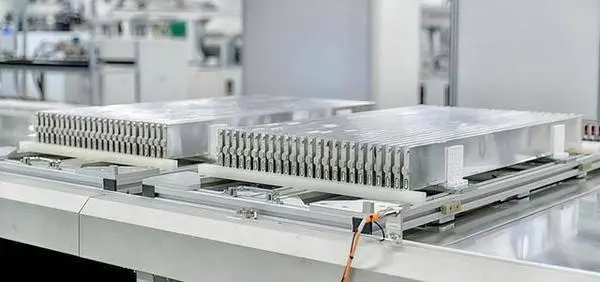
The use of lithium-ion batteries, including LiFePO4 batteries, is becoming increasingly popular in consumer electronics and energy storage applications due to their high power density, long cycle life, and low self-discharge rate. However, the potential for a battery explosion always exists when using these types of rechargeable cells.
It is crucial for those who use or work with LiFePO4 batteries to understand the risks involved and take appropriate safety precautions. This article discusses the possible causes of a battery explosion, how to prevent them, and what should be done if an explosion occurs.
Explosions can occur when heat builds up within a battery cell faster than it can be dissipated, a phenomenon known as thermal runaway. This leads to an uncontrolled increase in temperature inside the cell until its outer casing ruptures or melts due to excessive pressure buildup.
To minimize the risk of explosions caused by this process, proper charging techniques should be used with all LiFePO4 batteries, and they should not be overcharged beyond their rated capacity. Additionally, damaged or defective batteries should never be used as they could easily reach higher than normal temperatures during operation and cause an internal fire or explosion.
In addition to thermal runaways, other external factors such as short circuits or mechanical shock may also lead to battery explosions. To reduce the likelihood of these occurrences, it is essential to observe safe handling practices at all times, including careful transportation procedures designed specifically for protecting sensitive electronic components like LiFePO4 batteries from vibration or impact damage.
Furthermore, users must ensure that no metal objects come into contact with any exposed terminals on their devices, as this could create a dangerous electrical arc capable of causing significant damage or even triggering a fire or explosion.
Lithium-ion batteries are a type of energy storage device used in many products and applications. They are the most popular battery technology today, with over 5 billion units produced worldwide per year. To understand how these batteries work, it is first necessary to define their components and chemistry.
Lithium-ion batteries consist of two electrodes, an anode and a cathode, separated by a separator. The anode typically consists of graphite or carbon, while the cathode is composed of lithium-phosphate. A non-organic electrolyte serves as an ion conductor between the electrodes.
When charging a lithium-ion battery, positively charged ions leave the cathode and travel through the electrolyte toward the negative electrode. Upon discharge, this process reverses, and electrons move from the negative electrode to power electrical devices.
The charge capacity of lithium-ion cells depends on several factors, such as cell temperature. Understanding how lithium-ion batteries store energy requires knowledge of both chemical and electrical processes.
Manufacturers often incorporate protection circuits (BMS) into their designs to ensure safety during use. These circuits monitor various parameters, such as voltage levels or current flow. If any potential hazard arises due to abnormal conditions within the battery, these protection mechanisms will shut down the operation for added security. By utilizing advanced engineering principles along with modern materials, lithium-ion batteries have become reliable sources of stored energy.
LiFePO4, also known as lithium-iron-phosphate, is a type of rechargeable battery that has become increasingly popular in recent years. This battery chemistry offers numerous advantages compared to other types of batteries and can be found powering everything from electric vehicles to portable electronics. LiFePO4 batteries are highly reliable and offer excellent performance over extended periods.
The biggest advantage of LiFePO4 batteries is their safety profile; they are non-flammable and have extremely low self-discharge rates compared to other chemistries such as lead acid or nickel metal hydride (NiMH). Furthermore, LiFePO4 cells can withstand high temperatures without any risk of thermal runaway or explosion, making them ideal for applications where reliability and safety are critical.
Some key benefits associated with LiFePO4 batteries include:
Overall, LiFePO4 technology provides users with a safe and reliable way to store electrical energy in various applications, ranging from consumer electronics to industrial systems. Combined with its long lifespan, improved safety features, increased power density, and greater efficiency capabilities, this chemistry has established itself as one of the go-to solutions for many people looking for a reliable source of stored energy.

The potential dangers of using LiFePO4 batteries are significant. Despite their many advantages, such as being lightweight and having a long life cycle, these battery cells can be extremely hazardous if not used correctly. It is imperative to understand the risks associated with LiFePO4 to use them safely.
While LiFePO4 batteries carry a risk of explosion or fire, this is rare when proper precautions are taken. It is important for users to take all necessary steps to prevent any adverse events during the charging and discharging processes. This includes monitoring temperature levels, ensuring correct polarity connections, avoiding overcharging/over-discharge states, and not shorting the battery terminals by accident. Additionally, always store LiFePO4 batteries in an environment with adequate ventilation and away from combustible materials like paper or plastics.
For those still unsure about using LiFePO4 batteries due to safety concerns, alternatives are available on the market today, such as lead acid or nickel–metal hydride (NiMH) rechargeable batteries. Both offer similar performance characteristics without the same level of risk posed by LiFePO4s, so they may be better suited for certain applications where safety is paramount. However, all types of batteries must be handled with care regardless of chemistry type.
Ultimately, understanding how LiFePO4 works and its associated risks is key to safe operation and preventing potentially dangerous scenarios. Taking appropriate measures, such as following instructions carefully and being mindful of storage conditions, will help minimize the chances of accidents while enjoying the benefits of LiFePO4 technology.
LiFePO4 batteries are an upgrade to traditional Lithium-Ion technology. Through its unique chemistry, LiFePO4 cells offer several advantages over other rechargeable battery technologies. Understanding how these cells work is key to ensuring safe use and a longer lifespan for your LiFePO4 battery packs.
The components of a LiFePO4 cell include two electrodes (anode and cathode), a separator, and an electrolyte solution between them. The anode consists of lithium iron phosphate, which gives this type of battery its name, while the cathode contains carbon materials that act as conductors for the electrons during charge cycles. By utilizing specialized chemical reactions, these electrodes convert energy into electrical current when charging or discharging the battery.
At full capacity, LiFePO4 provides more power than traditional Lithium-Ion batteries while also having high thermal stability and a low self-discharge rate due to its unique chemical makeup. This allows it to be used safely under various conditions without fear of explosion or fire hazards like those seen with other types of batteries. Additionally, due to its increased durability against extreme temperatures and rough handling, LiFePO4 can provide up to 2000 charge cycles compared to 500 from traditional Lithium-Ion batteries, thus increasing the overall lifespan of any device powered by them.
When properly handled and maintained, LiFePO4 cells can provide reliable performance for years to come with minimal risk compared to other technologies on the market today. With proper safety protocols in place, such as not overcharging or short-circuiting the pack, users can trust in the dependability offered by this advanced lithium-ion technology.
What causes a battery to explode? The answer is complex and can vary depending on the type of battery. In general, however, lithium-ion batteries are more prone to exploding than other types due to their higher energy density and instability when exposed to extreme temperatures or overcharging. This applies particularly to Lithium Polymer (LiPo) and Lithium Iron Phosphate (LiFePO4) batteries, which have been known to be volatile if not properly handled or stored.
Several common factors can contribute to an explosive reaction in these types of batteries:
It is important to note that not all batteries will experience such events even under similar circumstances. However, it is crucial to follow manufacturer guidelines and practice safety protocols at all times to reduce the risk of battery-related incidents.
Battery explosions can be prevented with proper safety precautions. Following a few basic guidelines will help protect users and equipment from potential hazards.
The first step in preventing battery explosions is to ensure that the batteries are handled correctly. Always store batteries at room temperature and away from flammable materials. Avoid dropping or puncturing them, as this could lead to internal short-circuiting and thermal runaway, which may result in an explosion.
Secondly, it is important to use the right charger for each type of battery. Chargers designed for one kind of battery should not be used with another type, as they could overcharge the cells and cause them to become unstable. Additionally, never leave charging devices unattended for extended periods.
Thirdly, check regularly for signs of damage on both the cells and chargers, such as bulging or discoloration of the outer casing. If any signs of damage are found, replace the damaged parts immediately before continuing use.
Finally, keep batteries away from extreme temperatures, direct sunlight, and other sources of heat, as these can cause overheating and potentially lead to an explosion. Taking preventive measures will help to ensure the safe operation of LiFePO4 batteries.
Next:LiFePO4 vs. Lithium-Ion Batteries: Which Is Right for You?
Previous:Great Power Showcases Innovative Energy Storage Solutions at Intersolar Europe 2024